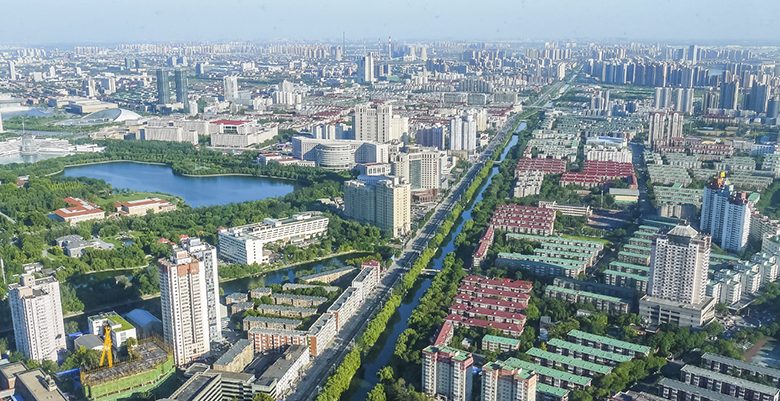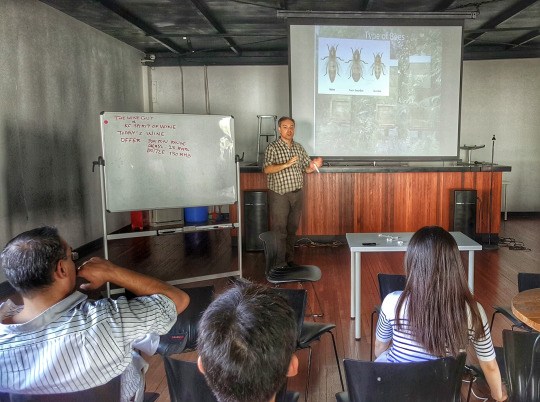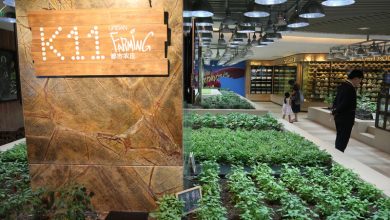GOOD TO CHINA: promoting a sustainable city

A few weeks ago we were able to contact an association that promotes Urban Nature in Shanghai and carries out other initiatives to make this city a more sustainable place. It’s about Good to China.

The truth is that it was a relief to meet them because as I told you in the post Looking for urban gardens in China: an adventure, it is not easy to find Urban Agriculture in this country (there is rather little…).
In this post I will tell you how the Good to China association came about, what projects it has underway and who participates in them. Hopefully his example will serve as an inspiration in other cities of the world (and especially in China) so that more people promote sustainable activities and more associations of this type are created. In this country they are essential activities since, as we saw in the post Urban agriculture in China, why is it necessary?, the problem of pollution is still an issue pending resolution.
Who founded Good to China and why?
Susan Evans founded Good to China six years ago. Until then, her work had had nothing to do with sustainability or agriculture in the city. At the University she had studied Mathematics and then worked in Germany in the development of technologies for the European Commission, in advertising agencies in London and San Francisco, and also for companies such as Nintendo, Perrier or Volvo. In any case, this topic of the environment had always been among the main interests of her.
In 2009 he decided to change his career. She arrived in China and it was clear that he wanted to get involved in a project related to urban sustainability. He didn’t know much about the culture or the interests that he had, in this sense, the Chinese population so he started to inquire about it.
Although his plan at first had not been to create a social enterprise, he immediately identified with some environmental groups in Shanghai and realized the need to make changes… He wanted to impact China with a project that would make its cities more sustainable places, because As he tells me, there is still a lot to do in this regard… There are few companies dedicated to this and there are many obstacles because people are not very aware.
That’s how the idea came about!! Because of a need: to make cities as populated and polluted as Shanghai more habitable. And so, together with volunteers also interested in the subject, he embarked on this Good to China adventure, starting more and more green projects in the city.
Who participates in this association?
Susan met Kareen Erbe shortly after starting her Good to China journey, who gave her all her support and knowledge to carry out the Urban farming project that I will tell you about later. This Australian studied Environmental Sciences and has experience and other studies on gardening, Permaculture and environmental conservation in Australia, New Zealand, the United States and Latin America.

In addition to Susan and Kareen, there are other experts and professionals who help with the various projects. In the photo, for example, you can see a beekeeping expert who gave a seminar on this in the meeting room of the Anken Roof Skyfarm community garden.
There are also many many volunteers who participate in Good to China initiatives : university students interested in urban sustainability, people concerned about the problem of pollution, market gardeners who want to have their own garden by cultivating a plot in a Skyfarm, school teachers who want their students to participate in Good to China activities, or companies and individuals interested in recycling, alternative energies, sustainable construction or urban gardens. Others are dedicated to helping solidarity projects such as “Pop-up farms”, dedicated to providing fresh food to the most needy Chinese communities.
Initiatives already underway
Good to China’s «Urban farming» project:
One of the flagship projects of Good to China in Shanghai is the “Urban Farming” initiative. With it, this association intends to create Skyfarms throughout the city. Skyfarms are urban gardens in which organic farming is promoted together with learning and environmental education, as I already told you in the post Skyfarm: a new model of urban garden in Shanghai.
They have already set up three orchards of this type. If you have seen the latest publications in the “Orchards around the world” category, you will know that when we were in Shanghai we visited two of them: Jiashan Skyfarm and Anken Roof, and we were able to meet some of the volunteer gardeners who participate in this Skyfarms project .
The third garden that is already underway is the one they have at the Concordia International School in Shanghai, where teachers help students integrate garden work with the curriculum of some science subjects.
The «Cool Bike» project
Another Good to China initiative is called Cool Bike. It is intended to promote the bicycle as a healthy, non-polluting, practical and convenient means of urban transport to create more sustainable cities.
There are two main goals: to make people see the advantages of cycling as a means of transportation in the city, and to make riding in Shanghai easier.
Other activities
At the moment there are two other projects underway: Cool living and Sustainable design.
These two initiatives aim to promote «clean» energy, recycling, reducing the carbon footprint, etc. They also intend to create more green areas and more sustainable buildings and designs in the city of Shanghai as a means of improving the quality of life.
Good to China also organizes events to publicize its projects and to promote organic food, sustainable design or the use of bicycles, such as the Eco local Market (a fair-market for organic products held at the «Hotel Plaza » in Shanghai last June) or the Eco Desing Fair.
You can find out about everything they do on their website: goodtochina.com, where you can see photos, videos and more details about the projects.
Good to China: Challenges and future plans
As Susan Evans, promoter of Good to China, told me, the association is already working on projects that operate in more places than Shanghai. In this way, agriculture and urban sustainability will be promoted in other cities in China with initiatives and projects like the ones I have told you about today.
One of the most important challenges is the awareness and participation of the people. Getting places for events or creating gardens is much easier, he says, than finding people who want to participate in them. For this reason, they want to focus on understanding people, on understanding their culture… to create better forms of communication that can impact them and reach them better.
Well… up to here what I have been able to learn about this association so complete! I hope you liked the post and who knows… maybe it could be an inspiration to some of you! Greetings!




